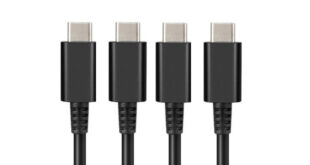Developers have moved to show careful optimism about the Apple Watch’s potential for games in the wake of the much-anticipated wearable’s reveal.
The smartwatch debuted at Apple’s September press conference, making Apple something of a latecomer to the wearables space, where the likes of Samsung, Motorola, Sony and Pebble are already active in the market.
Sporting a diminutive front touchscreen display, ‘Crown’ dial and button that apes the form of traditional watch winders, heart rate monitor, microphone, and accelerometers, the Apple Watch offers both opportunities and challenges to developers, who are to be supported with the WatchKit, providing all the tools and APIs they need for the platform.
Big potential?
All of these features has developers that are already active in the iOS space feeling optimistic about the potential for games.
“I’m very excited about the Apple Watch,” offered Markus Pasula, CEO and co-founder of Supernauts studio Grand Cru. “Players can be even more connected to mobile games that are truly social, with new kind of very fast and simple interactions.
“Taken further, I believe it can even enable new kinds of social gameplay mechanics. Smartphones are already always with you, but the smartwatch is even closer. When your friend does an action in a game, you can respond faster through your Apple Watch.”
The potential for social interaction is something Apple has put at the forefront of much of the design of the watch, as gameplay and UI designers begin to consider the reality of ‘glanceable’ design, serving players who will take fleeting looks at the screen of a watch.
The Apple Watch – which also provides haptic feedback to users through soft vibrations targeted at the wrist – effectively provides an extension to the iPhone, a link that remains essential to making use of the wearable.
As such, many developers are beginning to consider the challenge and opportunity of crafting a new school of game design around small screens.
“One thing we’ll be sure to do is think outside of the obvious,” explained Dan Gray, executive producer on UsTwo’s critically celebrated tablet-focused puzzler Monument Valley.
“It isn’t a case of finding ways to take existing mechanics to a new platform. We have to think about what properties and capabilities the device has that nothing else does. Then design around these so that the negatives are nullified.”
Development smarts
The challenge will be a significant one, and as such some are predicting that it will take some time for even the most experienced developers to make the most of the new Apple Watch.
“I think it’s going to take a lot of people by surprise,” said Will Luton, designer of current Pebble exclusive Pixel Miner.
“As an early adopter with the Pebble, I was impressed with the scope of such a device just by living with it. I can see lots of creative application in games.
“However, lots of people will get it wrong for a long while. Just as they did in mobile. The tendency will be to consider it a smaller phone, but the patterns of usage and control paradigms will be so different that the majority of mobile titles won’t make for good experiences.”
Ed Rumley, general manager at Chillingo, recognised the effort needed to adapt game design conventions for smart watches, adding: “We’re very excited about the Apple Watch and are working closely with our indie developers to examine the best ways to leverage its features.
“The wearable experience is still in its early days but it has vast potential in expanding how players interact with their games and mobile devices.”
A new way to play
In spite of modest caution around crafting a new grammar of design for wearables, however, most agree the opportunity is significant, opening the doors to many new types of interaction and game experience.
“The most obvious of these benefits is accessibility,” stated UsTwo’s Gray. “Being able to interact with a player without the hassle of pulling a device out of their pocket is a powerful thing, and can lead to a more sustained and thus personal experience.
“The most obvious and easy to implement example of this will be notifications for free-to-play games; those timer designers will be sat with a bit smile on their face right now.”
Watch this space
There is also much optimism around the Apple Watch’s potential to further spread games to the mass consumer market, just as the iPhone did after its 2007 launch.
“There’s a clear pattern in place if you take the long view,” said Ben Cousins, consultant and former developer. “Computing platforms are getting smaller, simpler to use, and more intimate or accessible physically, and each of these improvements makes games more mainstream, and grows the market in the process. Smartwatches fit perfectly into this trend.”
Cousins continued by explaining that while the Apple Watch presents developers with many obstacles through the likes of its screen size, there is every chance it could thrive.
“We have a clear example in recent history – the smartphone – of a device class with precisely those same ‘restrictions’, which ended up being the biggest games platform of all time.”
The Apple Watch is due for release in 2015, and will be priced from US$349.

 MCV/DEVELOP News, events, research and jobs from the games industry
MCV/DEVELOP News, events, research and jobs from the games industry



